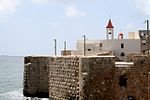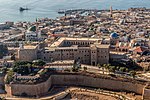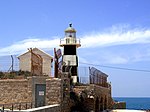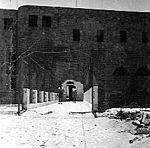Tower of Flies

The Tower of Flies (Latin: Turris Muscarum) was a formidable guard tower/fort at the medieval city-port of Acre, Israel, which overlooked the harbour from a small island and protected the city's rich maritime trade. It also served as a lighthouse. Its precise origins are unknown, but it is an ancient structure, most likely built in Phoenician times. It was the Crusaders of Europe that redeveloped the tower to the height of its prowess during a re-fortification of the ancient port after the city's capture in the First Crusade. The tower was also attached to a giant harbour chain that was strung across the harbour to prevent the entry of ships. The ruins of the tower are still visible today.
Excerpt from the Wikipedia article Tower of Flies (License: CC BY-SA 3.0, Authors, Images).Tower of Flies
שער ניקנור, Acre
Geographical coordinates (GPS) Address External links Nearby Places Show on map
Geographical coordinates (GPS)
| Latitude | Longitude |
|---|---|
| N 32.918611111111 ° | E 35.072222222222 ° |
Address
מגדל הזבובים
שער ניקנור
2451308 Acre
North District, Israel
Open on Google Maps











